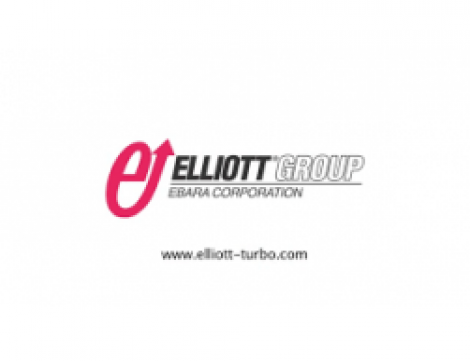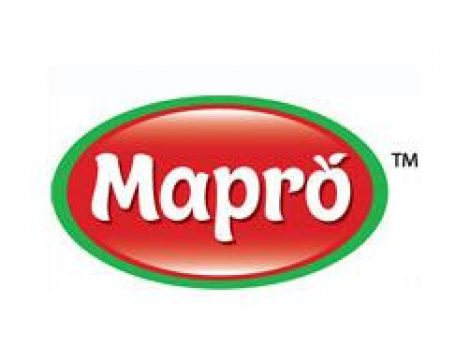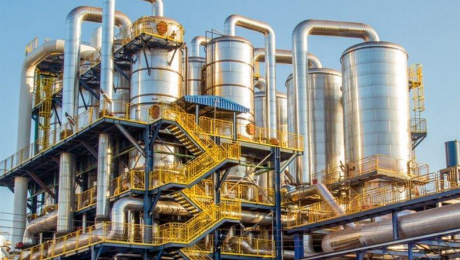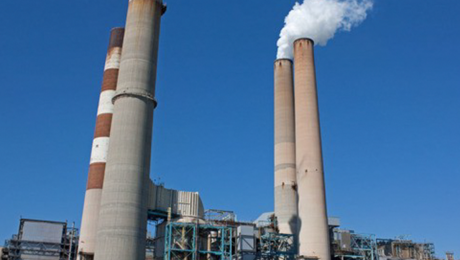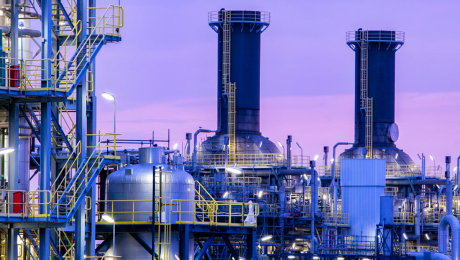- Home
- About Us
- Products
- EPC projects
- Technology
- Services
- Clients
- Media
- Blog
VIEW ALL -
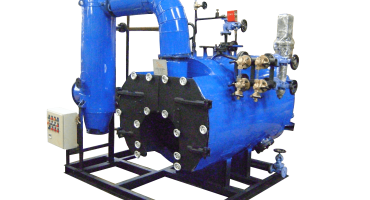 19 July 2023 by bullweb, in Boiler
19 July 2023 by bullweb, in BoilerA Guide to Boiler Maintenance in Chemical Processing Plant
Steam boiler systems are irreplaceable in the chemical process industries. Among...READ MORE +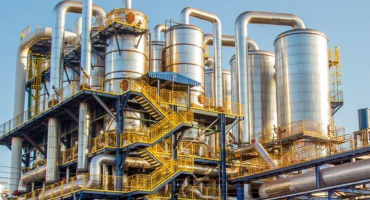 19 October 2022 by bullweb, in Steam Boiler,Steam Jackets
19 October 2022 by bullweb, in Steam Boiler,Steam JacketsSteam Jackets in Boilers | Definition, Types, and Applications
Steam is integral to meet various process operational requirements in manufactur...READ MORE +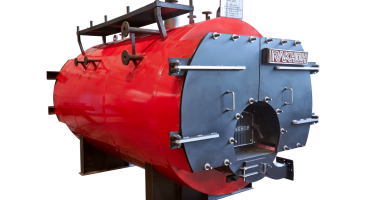 17 October 2022 by bullweb, in Boiler,Steam Boiler
17 October 2022 by bullweb, in Boiler,Steam BoilerSigns that indicate replacement for steam boilers
Steam boilers are vital equipment for steam generation in the process and manufa...READ MORE +
- Careers
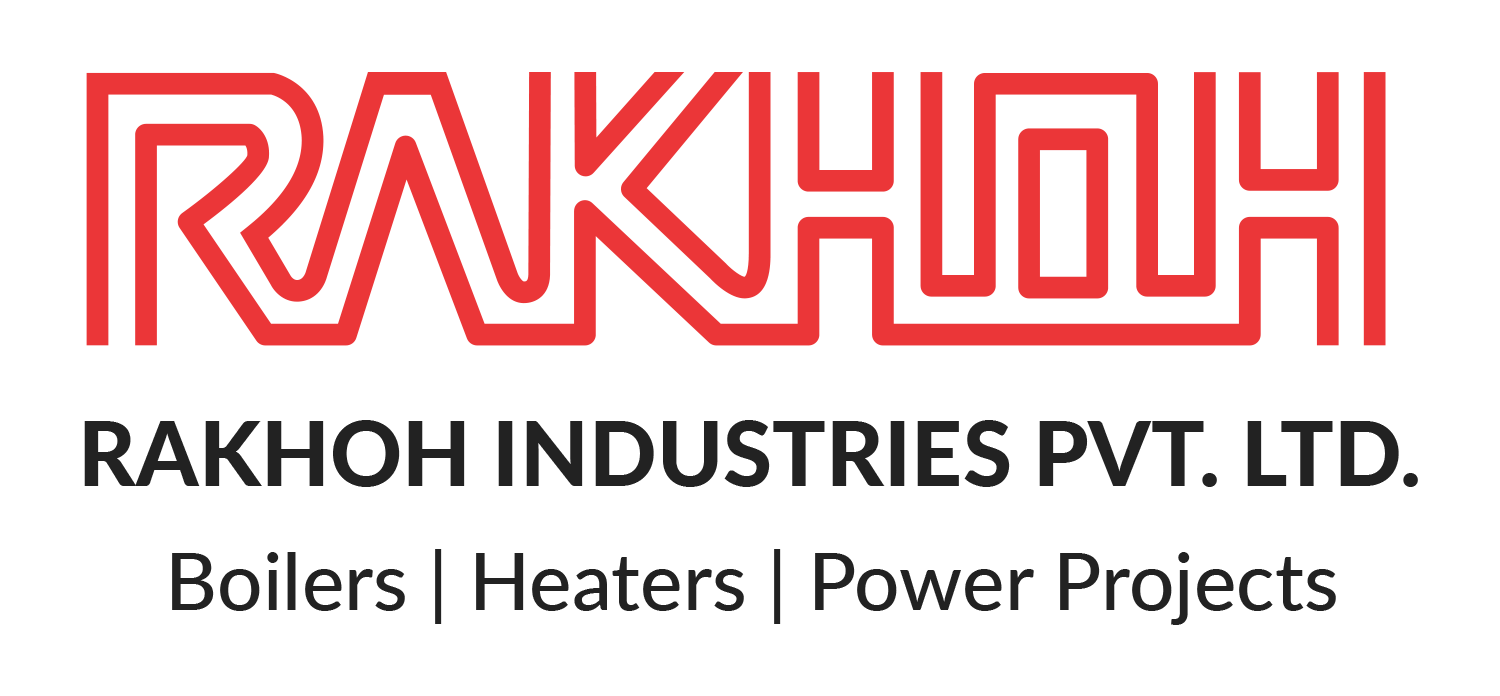
BOILER ACCESSORIES, THERMIC FLUID HEATERS & SPECIALTY FABRICATION.
+9120 - 66308333
Email: enquiry@rakhoh.com
RAKHOH BOILERS
S-11, T Block, M.I.D.C.,Bhosari, PUNE - 411 026. Maharashtra, India
BLOG & STORIES
Steam Boilers are irreplaceable for operational purposes in manufacturing facilities. Plant managers ensure that the boilers are functioning seamlessly by taking every precaution. However, some issues in the steam boiler system are inevitable that need immediate action. One of such issues is corrosion and erosion that occurs in every component of the steam boiler, including piping. Corrosion can lead to overheating or failure of boilers, resulting in severe losses or injuries as well as extensive plant downtime. Poor quality of feedwater is a major cause of the corrosion, along with the temperature of water or steam, presence of oxygen, pH, quality of steam, flow velocity, the chemical composition of steel pipe, and oxide layer on the inside of pipe.
Corrosion in Steam Boilers:
The feed water used for the processing operations should not be of poor quality with any impurities, impacting the boiler performance.
Utilizing water for heat transfer and steam generating purposes requires attention to prevent problems arising due to corrosive gases like dissolved oxygen and carbon dioxide. The intensity of the gases attacking the steam boiler depends on the quantity of dissolved substances, water pH, and temperature.
Corrosion mechanisms in steam boilers are caused by collective depositions of ferric oxides and dissolved salts of calcium, magnesium, iron, copper, and aluminum. The deposit acts as thermal insulation in high heat transfer areas, leading to local overheating and extreme corrosion in steam boilers.
Causes of Corrosion in Steam Boilers:
Corrosion in steam boilers are caused due by various factors such as,
- Negligence in maintenance or/and reparation that halts the system from operating, resulting in production loss
- Increased fuel utilization and reduced efficiency in steam boiler
- Exceeding maximum metal resistance
- Extensive time period in reaching system parameters
Corrosion in Piping:
Corrosion in pipes, if overlooked, can eventually advance to the internal part of the metal, leading to pipe thinning and pipe failure. Additionally, corrosion by-products are transported through pipes that contaminate the fluid and cause erosion and further corrosion of piping and valves.
Corrosion of Steel:
Steel piping in steam boilers includes a considerable amount of steel and is exposed to rust in specific conditions. The oxidation of the metal surface by contact with air and water results in iron rust. Steel condensate recovery pipes are particularly at risk due to ample reagents for rust formation.
In properly maintained steam pipes, there is considerably less air and water present after startup. It consequently decelerates the spread of rust. It must be noted that less rust is formed in a closed condensate recovery system compared to an open recovery system. After shutdown, contaminated air in the steam boiler system results in extensive corrosion. Frequent shutdowns in boiler systems cause increased rusting of pipes with condensate remaining in the system during the shutdown.
Steam trap helps to eliminate condensate and keep the steam dry to prevent rust. Air vents release excess air from the steam boiler to decrease the possibility of rust formation. It is vital to manually drain condensate during shutdown that steam traps fail to drain.
Corrosion of Copper:
Because of its low installation cost and easy bending around the equipment and flanges, copper is used in tracing lines. However, high temperature and low pH value in condensate destroy the copper ions that dissolve in the condensate. Copper-filled condensate reaching the steam trap causes the lower pressure on the outlet side of the trap to flash into steam. It results in some copper ions precipitating and accumulating as solid build-up around the valve, causing the reduced temperature in the tracing line and orifice blockage. It is important to treat feed water and monitor pH levels to prevent corrosion of copper. Neutral pH between 7 and 9 and low dissolved oxygen content is ideal for copper.
Preventing Corrosion in Piping:
- Stainless steel is considered a corrosion-resistant metal due to a process termed passivation. Passivation is the formation of a thin oxide layer on the metal surface when introduced to the air. The oxide layer safeguards the stainless steel by naturally forming a resistant layer for corrosion and rust.
- Properly implementing steam traps and air vents during shutdown to avoid air and water from reacting.
- Adequate water treatment and monitoring of condensate pH level
- Draining the system of condensate during shutdown
- Selecting pipes and traps based on the needs and requirements of the system
Conclusion:
Rakhoh Boilers is a leading thermal solution provider and steam boiler manufacturer in Pune since 1983. With our dedication and expertise, we have delivered over 3000+ efficient steam boilers in 26 countries worldwide. We manufacture a range of industrial steam boilers, waste heat recovery systems, thermic fluid heaters, and boiler accessories. We provide the best boiler services like steam trap assessment, energy audit, boiler automation, annual maintenance contract, etc.
Visit our website www.rakhoh.com to know more about our products and services.
Steam Boilers are integral in process plants and manufacturing units. Several process operations rely heavily on efficient steam boilers for processing, drying, and sterilizing purposes. Plant managers take every measure to ensure the smooth functioning of steam boilers and the safety of the process plant and operating personnel. Regular maintenance inspects the wear and tear in steam boilers and prevents it before it leads to mishaps. However, one of the main concerns of most plant managers is the increased use of natural resources for the combustion process in steam boilers. It consequently results in higher demand for energy, adding to the expense of the manufacturing facilities.
Energy Audit in Industries:
Energy audits aid industries or manufacturing facilities in assessing energy utilization and identify the areas that lead to the high amount of energy waste and measures to improve it. The energy auditor directs the audit by coordinating with the plant managers and operating staff to ensure precision in data and proper execution of the suggestions.
With the increasing cost of energy, the industries might face considerable losses if they make changes on guesswork without proper auditing. Energy audit assists the industries in evaluating energy wastage and suggests measures to reduce energy consumption. Energy Audits usually take place in 3 stages:
Investigation Phase:
- Energy consumption since last 1 to 2 years
- Energy supply contracts and tariffs
- Floor area, number of staff members, production levels
- Benchmark level of energy use and cost
- Metering equipment
- Plant configuration
- Electricity configuration, condition, and controls
- Energy management process and policy
- Assessment management plan, if any
Monitoring Phase:
- Gas load profiles
- Internal temperature or humidity
- Ventilation rate
- Analysis of boiler flue combustion
Analysis and Reporting Phase:
- Finding complete energy efficiency
- Assessing Greenhouse Emission Index
- Analysis of life cycle cost
- Analysis of tariffs
Energy Audit for Efficiency Improvement in Steam Boilers:
Steam boiler systems with optimal efficiency lead to high production and eventually high profits for the manufacturing unit. Improving the boiler efficiency and capturing excess heat results in saving energy. Energy assessment of the steam boiler system includes the following factors:
Demand and Size of Boilers:
The heating demands during process operations may change in steam boilers, resulting in systems functioning below their optimum efficiency. Boilers are oversized due to factors such as unrequired additions and expansions. It results in boiler ‘short cycling,’ which occurs when the boiler quickly completes the process operation or heating demands and shuts down until the next process cycle. In such cases, a smaller size boiler that meets the required load demands of the facilities is ideal for saving energy.
Boiler Allocation:
Process facilities using multiple boilers can save energy by implementing boiler allocation strategies by operating it simultaneously under low-fire conditions. Such practice maximizes efficiency and reduces energy costs. Hot water boiler efficiency is also improved, by using automatic flow valves that shut off the boiler when not in use. It prevents the hot water from getting cool.
Flue Shut-off Dampers:
Heat loss to the chimney occurs significantly if the boilers shut down regularly because of load changes. Fully closing stack dampers help in preventing the loss of hot air. It functions when the boiler is not in operation.
Maintenance:
Negligence in the regular maintenance schedule can negatively impact the burners and condensate return system in steam boilers. Such factors can account for up to 20% to 30% of boiler efficiency over the 2-3 years. A timely maintenance program ensures optimal performance of all the boiler components, resulting in significant savings and reducing air pollutant emissions.
Reduction in Fouling:
It is essential to control the fouling of the fireside of boiler tubes and scaling of the waterside of boiler tubes. A soot layer of 0.03 inches can reduce the heat transfer by 9.5%, and 0.18 inches of layer reduces it by 69%. Scale buildup of 0.04 inches in water-tube boilers can increase fuel consumption by 2% and even result in boiler tube failures. Boilers burning solid fuels like coal have a higher tendency of fouling compared to liquid or gaseous fuels.
Blowdown Rate:
Improper blowdown causes boiler water carryover to the steam or deposit formation and exceeding the range results in waste of energy, water, and chemicals. The blowdown rate depends on various factors such as boiler design, operating pressure, makeup water quality, and water treatment. Depending on the feedwater flow rate, the blowdown rate can range from 4% to 8%. Reducing the blowdown rate can decrease the energy loss, makeup water, and chemical treatment costs.
Reducing Excess Air:
Excess air used in burning the fuel causes wastage of heat while heating the air. Lack of maintenance in boilers consists of up to 140% of excess air resulting in waste gas. Boiler efficiency is increased by 1% for reducing 15% of excess air. It is necessary to inspect the fuel-air ratios regularly.
Preheating Boiler Water with Economizer:
Boiler feedwater can be heated by flue gases through an economizer which increases the water temperature in the boiler inlet. It consequently reduces the amount of heat needed for steam generation, thus saving fuels. Economizers can reduce the fuel requirement by 5 % to 10% by recovering waste heat.
Condensate and Heat Recovery:
Installation of condensing economizer can improve the overall heat recovery and bring about 10% steam boiler efficiency. Up to 80% of heat released through blowdown is recoverable using flash vessels and heat exchangers.
Combined Heat and Power:
Combined Heat and Power (CHP) or Cogeneration produces two forms of energy by using a single fuel source. The fuel energy is converted into mechanical and thermal energy. Thermal energy generates steam, hot air, and hot water, whereas mechanical energy produces electricity.
Benefits of Energy Audit:
- Reduces energy costs
- Reduces dependence on procuring energy sources externally
- Reduces environmental damage
- Reduces consumption of natural resources
- Reduce greenhouse emission
- Optimal performance of boiler components
Rakhoh Boilers has been a trusted name in boiler manufacturing and service providers for more than 38 years. We manufacture a range of efficient and reliable steam boilers and provide boiler-related services like energy audit, boiler automation, steam trap assessment, annual boiler maintenance, etc.
Explore our products and services at www.rakhoh.com
Steam boilers are pivotal for generating pressurized steam in the process and manufacturing sector. Steam has various essential properties that make it suitable and economically beneficial for process operations. It is important to perform an appropriate water treatment program as it affects the overall operating costs of steam boilers, particularly for fuel. The steam is generated in the steam boiler by heating water and later transported through pipes for heating, drying, sterilizing, and power generation purposes. However, as the water converts to steam, it leaves behind dissolved solids that concentrate in the boiler water and needs to be removed by blowdown to keep concentrations within the acceptable limits. Therefore, operating the steam boiler system without condensate treatment may lead to hazardous accidents down the line.
What is Condensate?
The steam exits the boiler through piping to transfer heat to a heat exchanger or steam jacket. When the steam condenses in the pipe, it is called condensate, which consists of minimal impurities in it. Therefore, it is essential to capture and return as much condensate water to the boiler as possible as it saves water, but more importantly, it saves fuel. Freshwater needs to be introduced if condensate is not returned to the steam boiler. The water needs to be preheated that burns fuel. Returning most of the condensate results in saving considerable money in energy.
After cooling of steam, it reverts to a liquid known as condensate. Steam traps collect the condensate for return to the deaerator or feedwater tank efficiently. The condensate blends with the fresh makeup water in a deaerator or feedwater tank and converts to feedwater. It is pumped back into the steam boiler when required to cover the water losses that occurred during steam generation and blowdown. The pressure range of the boiler and the use of the steam determine makeup water quality, ranging from raw water, softened water, to high purity de-mineralized water.
On the other hand, there are certain disadvantages with condensate returns. As the condensate is almost entirely pure water, it is one of the most corrosive elements when introduced to steel and starts to cool. Carbon dioxide (CO2) easily dissolves in water once it cools, and at the precise pH, it starts forming carbonic acid, destroying the steel. It is paramount to maintain the pH within acceptable ranges in the pipes. It is necessary to use a dealkalizer for removal of alkalinity from boiler makeup water or a water softener for removal of hardness from boiler water.
Solution for Condensate Water Treatment:
By following a few basic precautionary methods, condensate can be monitored and handled effectively. Here are the primary steps to ensure the condensate return in a steam boiler,
- The system should be checked for leaks and failed steam traps.
- The pipes and condensate receivers should be insulated properly.
- The steam should be treated chemically with a condensate treatment.
Among the various types of condensate treatments, amines are commonly used. Amines can be classified into two types i.e., filming and volatile. The volatile amines are entirely soluble and can be fed directly in the steam boiler. It is considered volatile as they flash off and carry the steam into the boiler system. Therefore, it is referred to as short-range, medium-range, and long-range neutralizing amines, depending on the distance it can travel “downpipe.” Neutralizing amines are alkaline that neutralize the acids forming in the condensate by raising the pH. It controls corrosion in condensate by eliminating the effects of carbon dioxide and other acid-forming compounds. Neutralizing amines are used for water treatment in a steam boiler to control condensate return line corrosion. The amines do not have any severe impact on copper or copper alloys under normal conditions, that includes pH between 7.5 to 9.0 and a few ppm of amine continuously added to the boiler water.
On the other hand, filming amines are not entirely soluble, and cannot be fed directly into the steam boiler. For effective results of filming amine, it must be introduced directly into the steam header with specially designed injection quills and pumps used for properly dispersing the filming amine throughout the steam. As the steam condenses, filming amine does not dissolve and instead coats the internal surfaces of the pipe with a microscopic layer of chemicals. The material deposits on the internal of the pipe restrict the liquid from entering it. Consequently, it prevents the condensate from coming in contact with the metal and protects the pipe from acid and oxygen pitting.
It is necessary to examine the amine fed in a steam boiler by,
- The chemical feed pump should only activate during the running of the feedwater pump.
- Slug-feed or minimizing daily feed duration leads to temporary high amine concentrations, impacting copper.
- Treatment chemicals should be introduced directly into the steam boiler with the availability of a separate chemical feed line. It can also be added to the feedwater tank or storage tank of the deaerator.
- Amines should not be fed before a deaerator as it may cause loss of the amine.
Conclusion:
Regular maintenance is necessary to ensure the hassle-free operation of the steam boiler. Excess blowdown, scaling, and condensate loss reduce boiler efficiency. Water treatment is crucial for the preventative maintenance program for any steam boiler system. Rakhoh Boilers is a trusted name for over 38+ years for manufacturing steam boilers and boiler accessories of world-class quality. We also provide excellent boiler services like fuel conversion, energy audit, boiler automation, annual boiler maintenance, and steam trap assessment.
For more details on our products and services, visit www.rakhoh.com
Steam Boilers are the backbone for processing operations in industries. Plant managers take every measure to ensure the safety of the steam boiler and the operating personnel. One such measure includes maintaining the boiler tubes. Overlooking boiler tubes can lead to hazardous consequences like overheating and boiler failure. Examining the root cause of the boiler tube failures is crucial to reduce the possibility of future boiler issues. An overall assessment is required to examine the cause of boiler tube failure that is usually a cause of other boiler problems. Some of the most common boiler tubes that occur on steam boilers are as follows:
Waterside failure for boiler tube:
- Caustic Attack:
The caustic attack takes place due to excessive deposition on the boiler tube surfaces, leading to reducing the cool water flow in contact with the tube. As a result, it causes local under-deposit boiling and boiler water chemicals concentration. It leads to a caustic condition that corrosively attacks and breaks down protective magnetite if blended with boiler water chemistry with high pH.
It is identified by localized wall loss on the surface of the boiler tube that increases the stress and strain in the tube wall and impacts furnace wall tubes or any inclined tube. Preventing caustic attacks requires avoiding the accumulation of excessive deposits and maintaining boiler water chemistry for preventing the local formation of caustic in areas with chemicals concentrated. In some cases of caustic attack, the top of a sloped tube is related to the steam-water separation that is avoided by using ribbed tubes. Maintaining boiler water chemistry is ensured by appropriate feed water chemistry with phosphate boiler water treatments.
- Acid Attack:
The acid attack occurs due to poor process control of boiler chemical cleanings or inadequate cleaning of residual acid. The tube metal surfaces result in an irregular pitted appearance on the boiler tube and affect water wall tubes.
It is prevented by maintaining water chemistry, proper controls for boiler chemical cleanings, and assessing the chemical hideout.
- Hydrogen Damage:
Hydrogen damage in the steam boiler is the result of excessive deposition on boiler tube surfaces and boiler water with less pH excursion. Inappropriate water chemistry from condenser leaks with saltwater cooling medium leads to acidic contaminants that are concentrated in the deposit and causes under-deposit corrosion releasing atomic hydrogen that passes to the tube wall metal and reacts with carbon in the steel. It causes intergranular separation.
Hydrogen damage is detected by intergranular micro-cracking, ductility loss, and boiler tube material embrittlement. It leads to brittle catastrophic rupture. It usually takes place in regions of high heat flux and can be prevented by maintaining water chemistry and avoiding scaling on the waterside of the boiler tube.
- Oxygen Pitting:
Oxygen pitting occurs by the excess oxygen in boiler water that takes place during operation due to in-leakage of air at pumps or failure in boiler water treatment. It also occurs during extended out-of-service periods of steam boilers. Aggressive localized boiler tube corrosion and loss in tube walls are signs of oxygen pitting.
Proper layup procedures during steam boiler outages, enhanced oxygen control during steam boiler startups, and operations can prevent oxygen pitting.
- Stress Corrosion Cracking:
Stress corrosion cracking occurs due to the combination of high-tensile stresses and the presence of corrosive fluid. It results from cracks that propagate from the boiler tube. The corrosive fluid results from the carryover into the superheater from the steam drum.
Stress corrosion cracking is identified by a thick wall, brittle-type crack at locations of higher external stresses. Stress corrosion cracks are usually related to various secondary cracks branched with the main ruptured area. The ideal solution for stress corrosion cracking includes preventing water carryover control and flush after cleaning.
- Waterside Corrosion Fatigue:
Waterside corrosion fatigue occurs due to thermal fatigue and corrosion. Corrosion fatigue depends on steam boiler design, water chemistry, boiler water oxygen, and steam boiler operation, leading to the breakdown of the protective layer on the surface of the boiler tube that prevents the boiler tube from corrosion.
Waterside corrosion fatigue can be detected by wide transgranular cracks taking place adjacent to external attachments. It is prevented by minimizing the operational cycles, constraints on tubes, and reducing dissolved oxygen on start-up.
Conclusion:
It is imperative to ensure regular maintenance of the steam boiler for optimal efficiency and productivity with hassle-free operations. Rakhoh Boilers are one of the renowned names as manufacturers of boilers in India with 38+ years of expertise in boiler manufacturing and thermal solutions. We manufacture a range of efficient and reliable industrial steam boilers, waste heat recovery boilers, thermic fluid heaters, and boiler accessories. We provide excellent boiler services like annual boiler maintenance, steam trap assessment, energy audit, boiler automation, fuel conversion, etc.
We are proudly catering to over 20 process industries in 26 countries worldwide.
Know more about our products and services by visiting www.rakhoh.com
